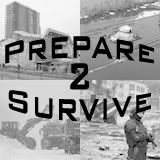Reasons for loss of water
• Power failure – no electricity, no pumps, no water
• Severe winter weather – pipes freeze
• Floods – contaminated water
• Earthquake- pipes break
• Social unrest – rioters break fire hydrants so city officials turn off water
• Terrorism – contaminated water
Hygiene is important
• Poor hygiene can cause disease and death
• Parasites, pathogens can travel a great distance by themselves)
• Some diseases caused by poor hygiene are cholera, diarrhea, hepatitis
Can’t I just dig a hole?
• It’s a health hazard – your house could be red-tagged and you could be forced to leave
• In most cases you cannot get a safe distance from a dwelling place or water source
• Human waste has to be treated (with ash or sawdust or chemicals)
Where do you go when you have to go, but you have no place to go?
If the cause is lack of incoming water:
• Pour water into the toilet bowl (just enough to flush, ½ to 1 gallon and be sure to use non-drinking water)
• “If it’s yellow let it mellow, if it’s brown flush it down.”
If the cause is bad pipes (either broken or frozen) or concern over sewage backup:
• Empty water from toilet bowl and line with a 13 gallon trash bag. When the bag is full, tie and store or bury (you typically have 3 –4 months before the bag will start to deteriorate).
• Use a chemical toilet such as an RV toilet (priced up to $150), or a homemade version.
Always keep plenty of hand sanitizer near by to keep from using precious water.
What to do with trash
Garbage = “Bio-mass” – Food scraps
• Compost pile
• Feed pets
Trash = non-degradable
• Reuse what you can. Most trash items are packaging that has never touched food. Come up with creative ways to reuse it such as writing notes, insulation, fire starter, toilet paper, etc.
Personal Hygiene
• Shower less and “sponge bath” in between
• Wet wipes
• Reuse gray water or canned goods to flush
Tuesday, May 4, 2010
Subscribe to:
Posts (Atom)

